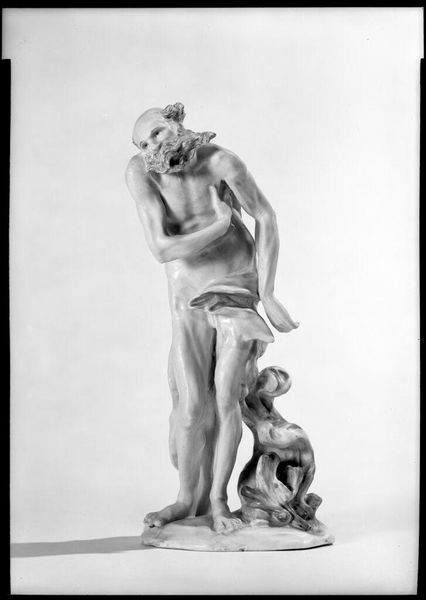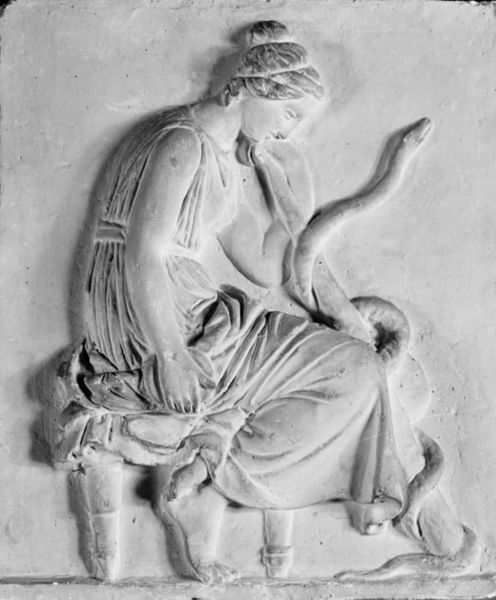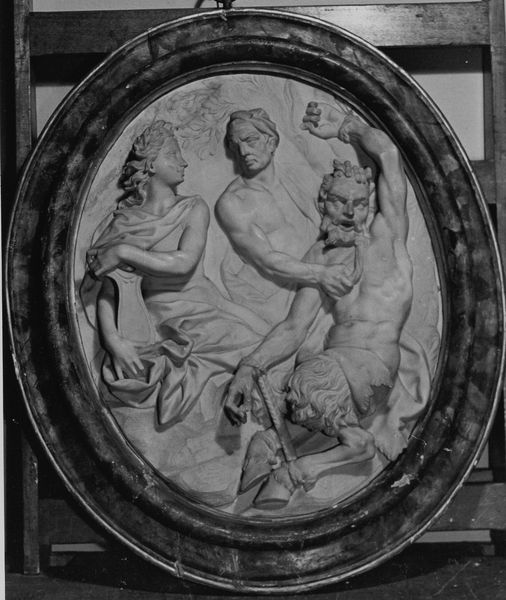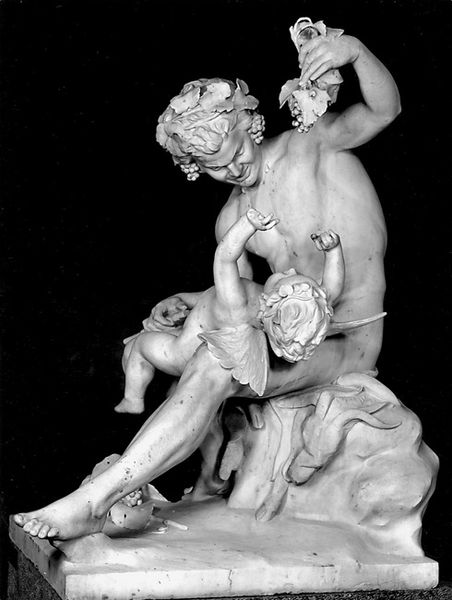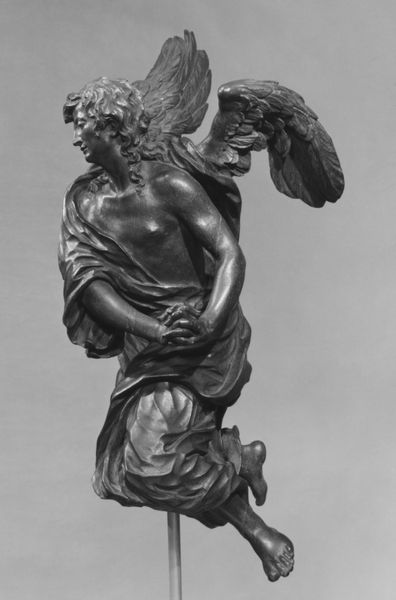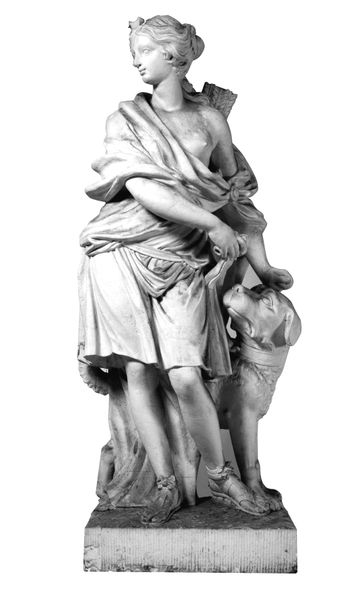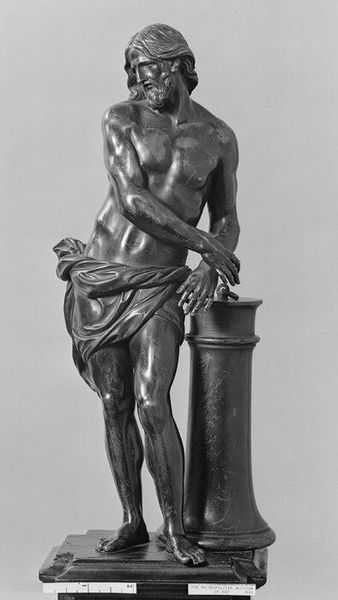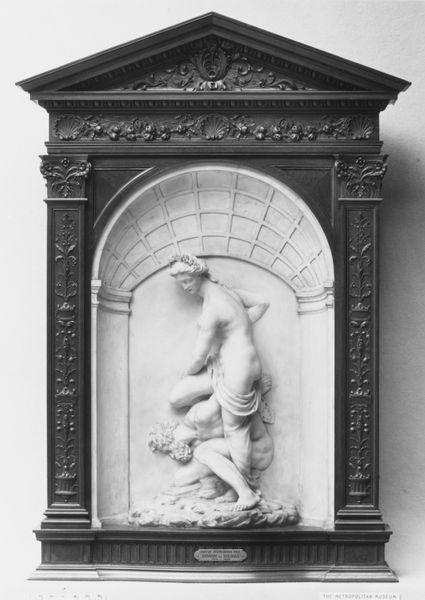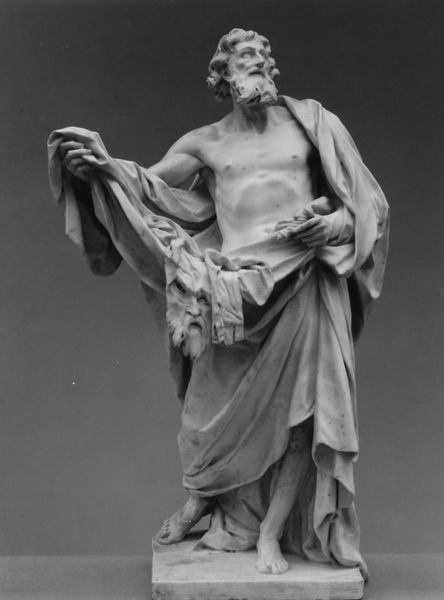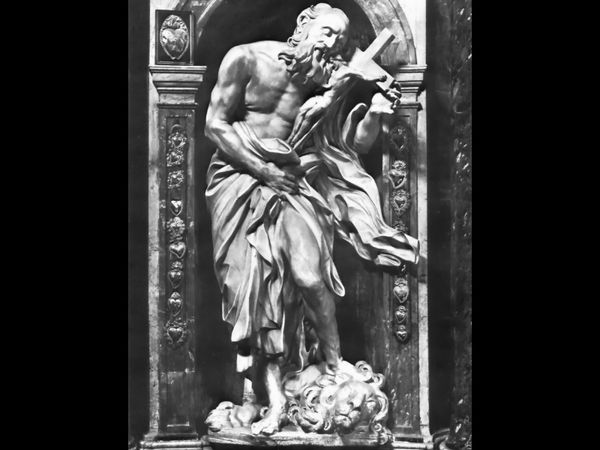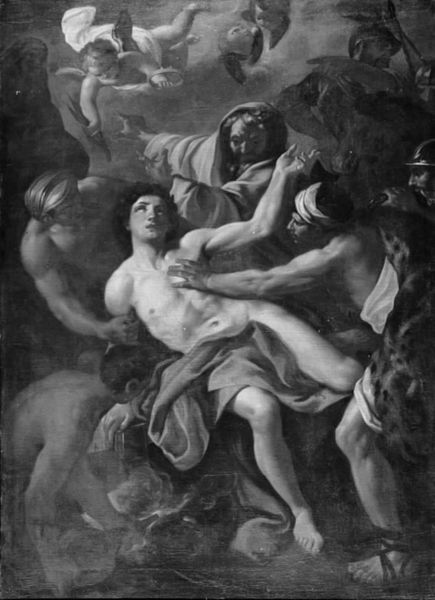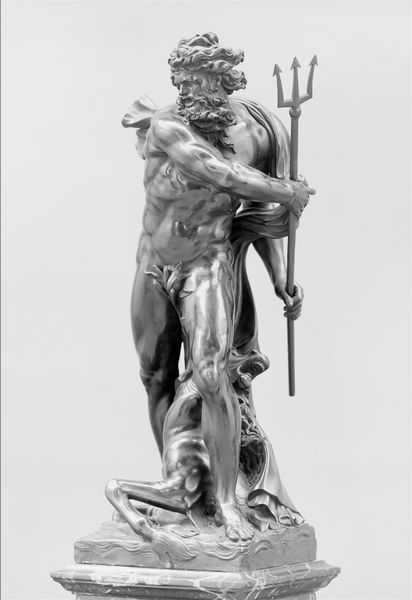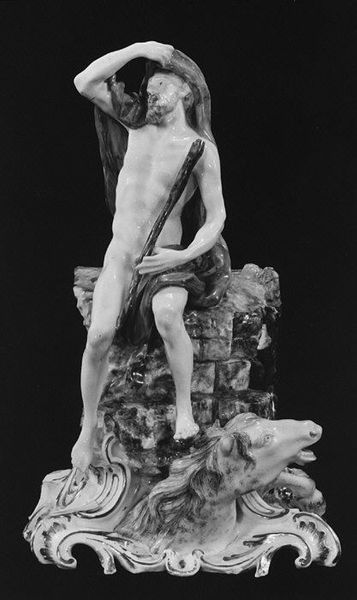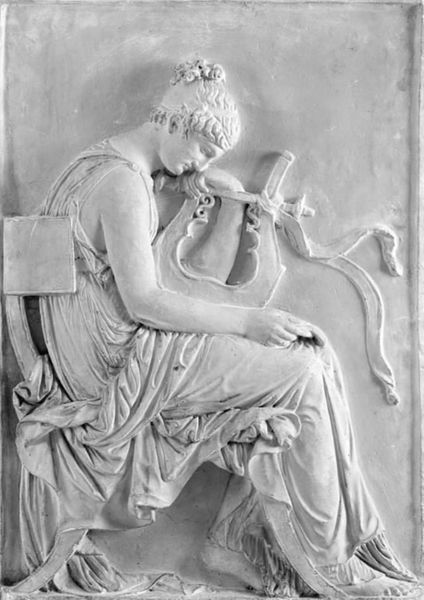
relief, sculpture, marble
#
portrait
#
neoclacissism
#
allegory
#
sculpture
#
relief
#
classical-realism
#
figuration
#
form
#
sculpture
#
marble
#
nude
Dimensions: 49.8 cm (height) x 24 cm (width) x 14 cm (depth) (Netto)
Editor: This is a marble relief titled "Apollo" created by Jacques Francois Joseph Saly in 1756. It’s housed at the SMK in Copenhagen. There's something so serene about it, but also very deliberately composed. What strikes you about this work? Curator: I see a deliberate invocation of power through classicism, a feature we observe as integral to understanding how art shapes societal values. How do you think a royal commission like this, with its visual references to gods and virtue, contributes to maintaining authority and conveying political legitimacy? Editor: It's interesting to consider how these idealized figures were tools for projecting power. Were there specific events or rulers Saly was trying to allude to with this "Apollo?" Curator: That's the key. While the visual language is undoubtedly neoclassical, drawing from ancient Greece and Rome, we have to think about its contemporary audience. Consider the reign of Frederik V of Denmark. He saw himself as an enlightened leader. Saly, who worked in the Danish court, skillfully utilized these visual strategies of antiquity to establish, legitimize, and monumentalize the image of his patron and, by extension, his kingdom, during an age marked by intense intellectual exchange between Europe's aristocracies. Where might this piece have lived within the palace structure? Editor: It likely would’ve been strategically placed to convey Frederik V's image, probably near spaces reserved for privileged, exclusive social interactions. So the "Apollo's" visual power, the reference to enlightened power, functioned primarily within that exclusive court circle, more about projecting to themselves than to the general populace? Curator: Precisely. It’s not necessarily about broad public messaging but about solidifying a certain kind of aristocratic self-image and projecting sophistication in an era that witnessed new modes of political communication. Editor: This has certainly shifted my thinking about how the image of rulers gains social currency beyond artistic conventions. It makes one appreciate the historical framework needed for truly understanding what Saly may have intended with this piece. Curator: Indeed. Paying attention to historical context makes visible the intentions behind these carefully crafted projections of authority and what these imageries might have meant to its intended elite audience.
Comments
No comments
Be the first to comment and join the conversation on the ultimate creative platform.
